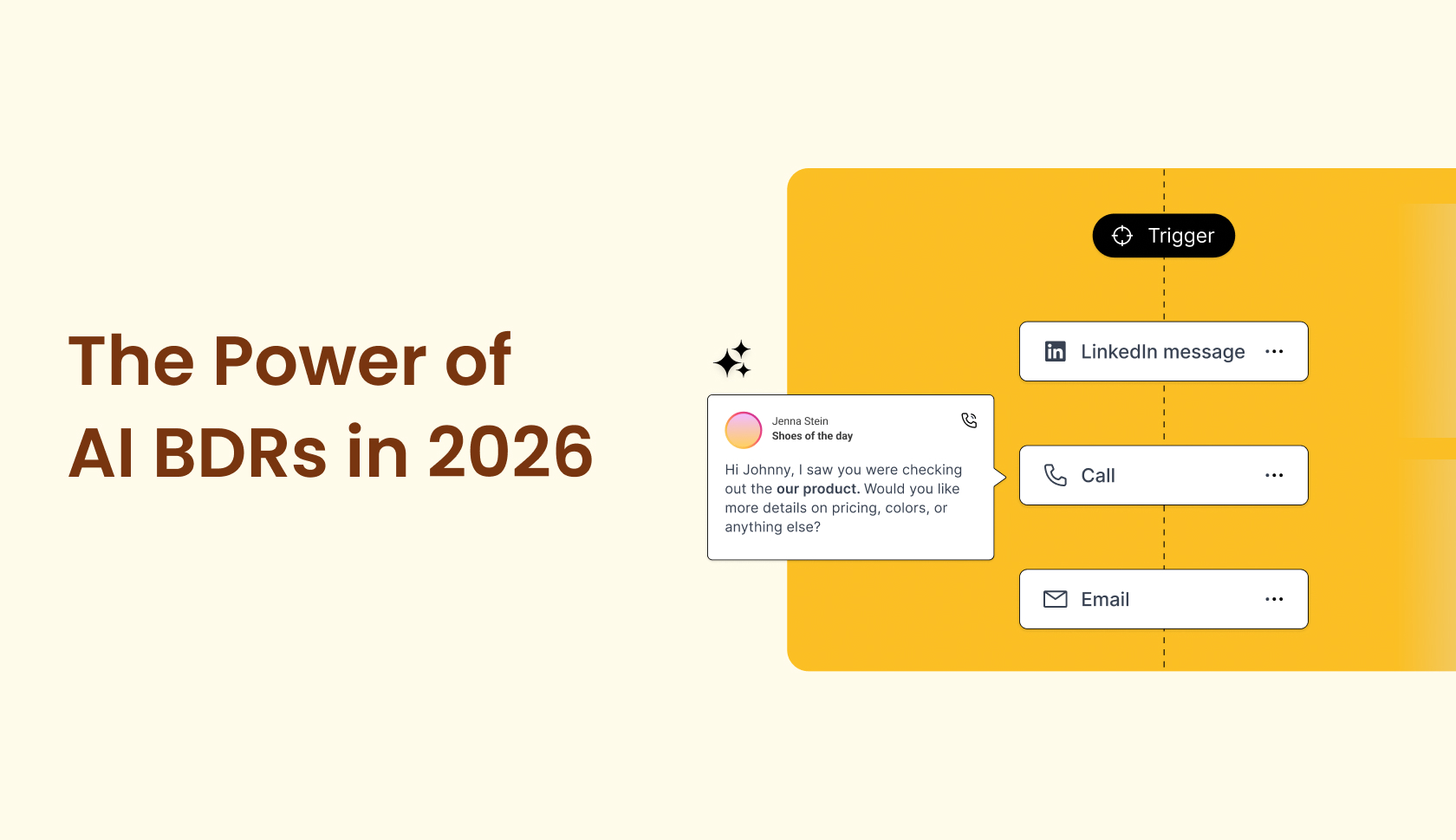.jpg)
Turning Closed Lost Opportunities into Future Wins: Strategies for Sales Teams
Introduction
Closed lost opportunities are, unfortunately, inevitable. No matter how compelling your product and pitch, how skilled your sales team, not every conversation results in a win. But for high-performing teams, these deals represent far more than just a line item marked lost in your CRM.
Closed lost opportunities are a rich source of strategic insight and future pipeline potential. They can reveal systemic gaps in your sales process, product positioning, or messaging. They also provide opportunities to re-engage prospects who may not have been ready when you first engaged, but could become great candidates in the future.
Too often, closed lost opportunities are left to languish unexamined, viewed as failures to be purged during CRM cleanups rather than data points to be mined. Here’s how to transform your closed lost pipeline into a strategic asset that drives both learning and growth for your revenue team.
Step 1: Conduct systematic closed lost analysis
It’s common to treat each lost deal as an isolated event, filing away the outcome and moving on to the next opportunity. But when you analyze them collectively, closed lost deals can provide insights into patterns and trends impacting win rates across your team.
What are the key questions to explore during analysis?
- Was pricing a consistent blocker across multiple deals, suggesting a misalignment with market expectations or perceived value?
- Are there product gaps repeatedly mentioned that competitors are addressing more effectively?
- Did deals frequently stall due to lack of urgency or executive buy-in, signaling a need for stronger business case development during discovery?
- Were certain competitors winning more often – and what differentiators were cited by prospects as reasons for their choice?
Leveraging AI sales intelligence tools can make this process scalable and actionable. AI can analyze call transcripts, notes, and CRM fields across hundreds of closed lost opportunities to surface themes that may not be obvious from anecdotal deal reviews alone.
This approach turns lost deals into learning opportunities, empowering sales leaders, marketing, and product teams to refine their strategies and address recurring obstacles across the business.
Step 2: Categorize closed lost reasons with actionable granularity
Generic closed lost categories like “budget” or “no decision” provide minimal strategic value. Sure, they indicate the immediate cause, but shed no light on actionable insights that drive improvement or re-engagement methods.
Instead, refine your closed lost categorization to include specific reason such as:
How can we refine our closed-lost categorization to include specific reasons?
- “Chose Competitor X due to feature Y or service model Z.”
Understanding precisely why a competitor won reveals areas to enhance positioning or prioritize in product development. - “Postponed purchase until [specific timeframe].”
This creates a clear future follow-up opportunity rather than a permanent loss. - “Pricing exceeded approved budget by [exact % or $].”
This enables strategic discounting, revised packaging, or justification in future proposals. - “Lack of internal champion or executive sponsor.”
Highlights pipeline quality issues and coaching needs for sales reps on champion development.
This level of detail enables tailored re-engagement programs, more accurate forecasting, and clearer cross-functional feedback loops with marketing and product teams to address root causes.
Step 3: Build tailored closed lost nurture programs
Not every closed lost opportunity is permanently lost. Many deals are lost due to timing, budget cycles, internal priorities, or temporary constraints rather than lack of fit. Developing customized nurture programs for each closed lost segment ensures prospects remain engaged until circumstances change.
What are some examples of tailored nurture strategies?
- Competitor wins: Set reminders to re-engage approximately 90 days before the competitor’s typical renewal window. Outreach should focus on product enhancements released since their evaluation and differentiated value propositions addressing their original decision drivers.
- Budget constraints: Prospects citing budget limitations often re-evaluate solutions during their next budget planning cycle. Follow up ahead of these cycles with ROI calculators, financial impact case studies, or updated packaging options that align with their spending limits.
- Timing-related stalls: When prospects express interest but delay due to internal timing issues (e.g. project prioritization or organizational changes), reconnect shortly after their indicated revisit date. Share insights, updates, or offerings that align with their evolving goals to reignite the conversation.
Automating these nurture sequences with AI SDRs means your follow-up will be timely, personalized, and scalable, freeing human reps to focus on live opportunities while keeping future pipeline warm and engaged.
Step 4: Maintain data hygiene and ownership accountability
How can we maintain data hygiene and ownership accountability?
Strong closed lost management relies on data integrity and clear ownership. Double-check that every closed lost record in your CRM includes:
- Accurate contact information for key decision-makers and influencers involved in the original deal.
- Detailed notes outlining deal context, objections raised, stakeholders engaged, and specifics of the lost reason categorization.
- Assigned ownership for future follow-up and re-engagement, whether by an SDR for nurture programs or an AE for strategic outreach.
Sales managers should incorporate closed lost pipeline reviews into their regular cadence (quarterly at minimum) to identify reactivation opportunities that can convert quickly due to previous relationship development.
Step 5: Empower your reps to confidently re-engage
How can you empower your reps to confidently re-engage with customers?
When the time comes to re-engage closed lost prospects, equip your reps with everything they need to strategically approach the conversation:
- Full context from the original deal cycle: Including why the deal was lost, who was involved, and what outcomes they were seeking.
- Updates on product enhancements: Highlight features or capabilities released since their last evaluation, especially those addressing reasons the deal was lost.
- Relevant company news: Such as leadership changes, funding rounds, acquisitions, or strategic initiatives that may indicate readiness for re-engagement or new needs aligned with your solution.
With this type of preparation, your outreach is not only personalized but also highly contextual, increasing the likelihood of re-opening the opportunity and advancing it further than before.
Conclusion
Closed lost opportunities don’t have to remain closed forever. By analyzing lost deals, refining categorization for actionable insights, building tailored nurture strategies, and empowering your team with AI-driven intelligence, you can transform your closed lost pipeline into a strategic growth lever.
Alta’s AI SDRs are purpose-built to help your team analyze closed lost data at scale, craft intelligent re-engagement sequences, and ensure no opportunity slips through the cracks. Discover how we can help you turn past losses into tomorrow’s revenue and build a resilient, future-proof pipeline strategy.
Frequently Asked Questions
What qualifies a deal as “closed-lost”?
A deal is considered “closed-lost” when the sales opportunity has been formally marked as not moving forward, either because the prospect chose a competitor, postponed their decision, didn’t have the budget, or decided not to purchase at all. Importantly, this doesn’t mean the opportunity is permanently gone—just that the current sales cycle has ended without a win.
How often should I follow up with closed-lost deals?
The timing depends on why the deal was lost. For competitive losses, aim to re-engage 90 days before the competitor’s renewal period. If the loss was due to budget, reach out ahead of your prospect’s next budget cycle. For timing-related delays, follow up shortly after the agreed revisit date. Quarterly pipeline reviews help ensure no opportunity sits idle for too long.
Can closed-lost opportunities actually convert later?
Absolutely. Many “lost” deals simply aren’t ready—yet. Changes in leadership, budget increases, product updates, or shifts in market conditions can all make a previously cold lead hot again. By tracking reasons for loss and maintaining thoughtful follow-up sequences, sales teams can turn past losses into future wins.
What CRM data helps identify relaunch timing?
Key data points include the original loss reason, expected revisit date, competitor contract renewal date, budget cycle, and any notes about internal project timelines. Combining these with prospect engagement signals (email opens, website visits, event attendance) gives a clear picture of the best moment to re-approach.
How do you track why a deal was lost effectively?
Use granular, specific loss reasons in your CRM instead of broad terms like “budget” or “no decision.” For example, note “budget exceeded by 15%,” “competitor won due to feature X,” or “decision postponed until Q4.” This detail makes it easier to spot patterns, tailor re-engagement strategies, and provide valuable feedback to marketing and product teams.
Should marketing be involved in re-engaging closed-lost deals?
Yes. Marketing can create tailored nurture content—such as product update announcements, case studies, and ROI tools—targeted specifically to the reasons a deal was lost. This collaboration ensures prospects receive consistent, value-driven messaging before a sales rep even reaches out again.
What role does product feedback from closed-lost deals play?
Insights from lost deals can highlight missing features, usability issues, or competitive gaps that product teams need to address. Feeding this data back to product leadership ensures that future versions of the offering are more competitive, making it easier for sales teams to win similar opportunities later.


.png)




